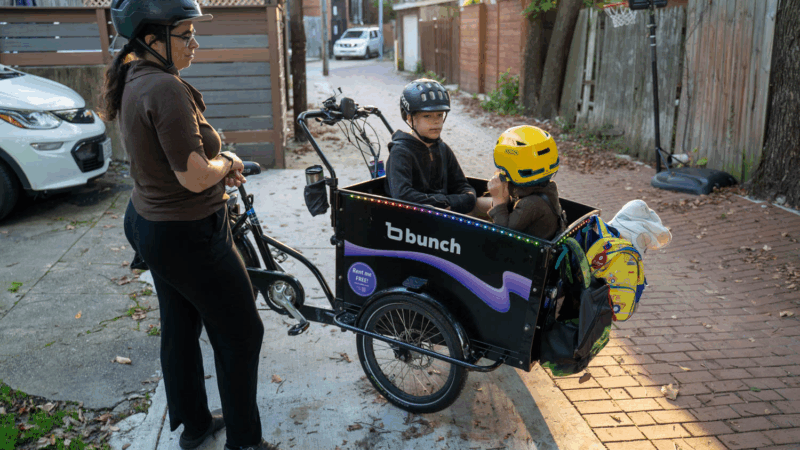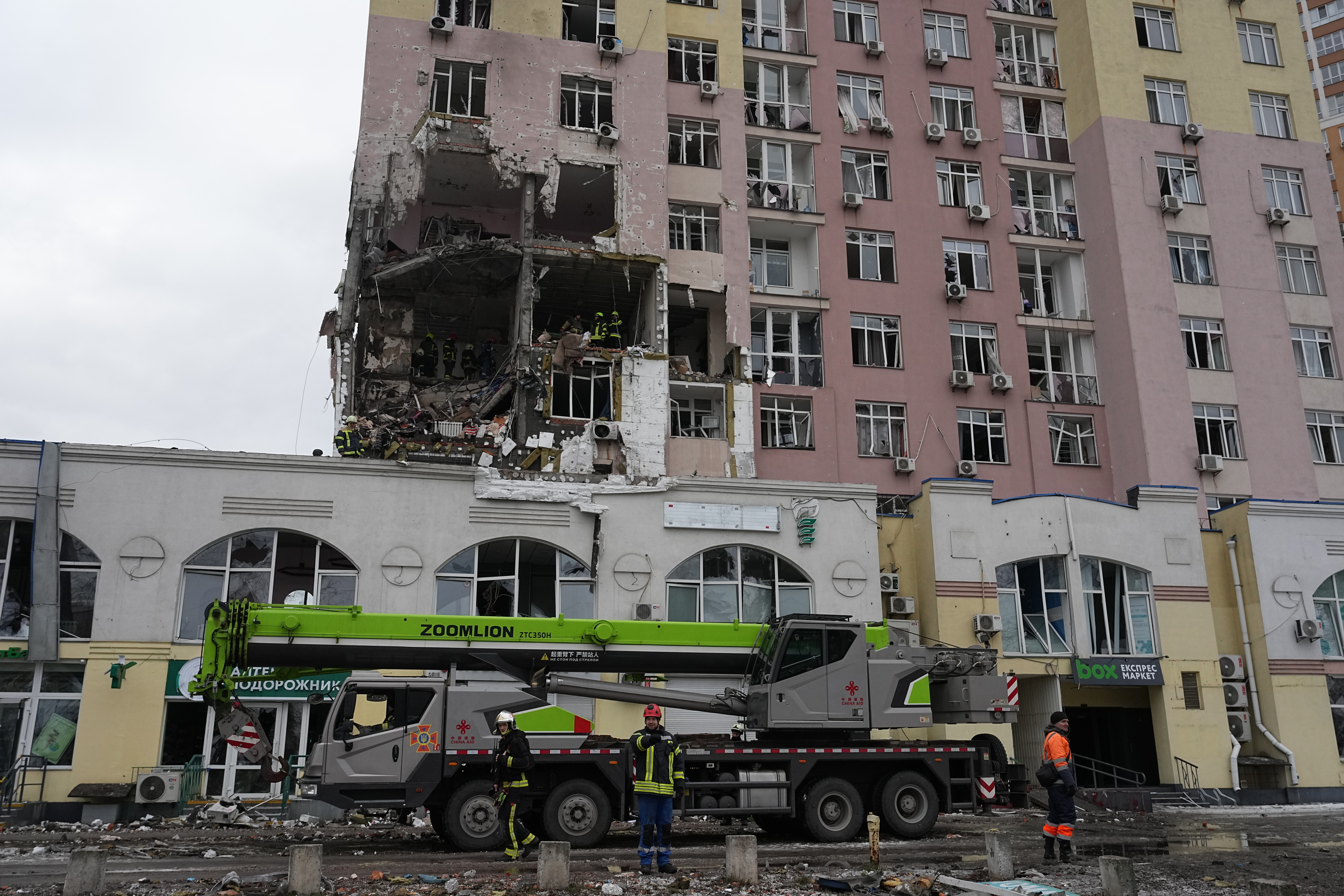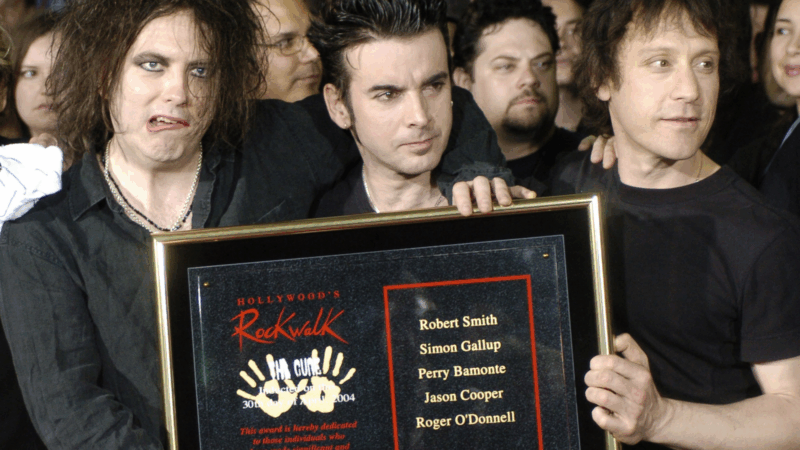Why more parents are riding cargo bikes, skipping the minivan
If you live in any major city or suburb in the U.S., you may have noticed more and more parents hauling their kids around on bulky cargo bicycles. Some families are ditching their second car, forgoing a minivan, or going car-free altogether.
Cargo bikes have been around for more than a century — and they’re popular elsewhere on the globe. But until a few years ago, they were all but forgotten in North America. Now they’re making a comeback.
There are a few reasons behind the surge in cargo bike ridership, including better bicycle infrastructure, and bikes that are easy to ride, even if you’re not an athlete.
Lelac Almagor was not a biker before she bought her cargo bike.
“I’m a very lazy person,” Almagor says.
She thought she’d give the bike a try, and probably return it.
“But by the third day I was like, ‘Oh, this is actually going to change my life,'” says Almagor, who lives in Washington, D.C.

Now she rides her three kids to school every day, even when it’s pouring rain or hot and muggy.
“It’s such a better start to my day, that now there’s truly not weather that I would rather drive in,” Almagor says.
She bought the bike six years ago — back then, she’d see maybe one other cargo bike parent at school. Now there are dozens crowding the bike racks, not to mention the riders she sees heading to other schools. Almagor got so into cargo bikes, she left her teaching career and now works for a bike company.
Bikes designed to carry kids
Today’s cargo bikes are designed specifically for transporting kids, with comfy seats and rain canopies, and, importantly, electric motors.
Philip Koopman, a longtime D.C. bike shop owner, says there were no electric cargo bikes when his kids were young. He toted them around around the city in a trailer behind his bike, muscling up hills.

“Most people don’t want to be sweaty when they get to work,” Koopman says. “So having these different options, it just makes cycling so much more attainable for so many more people.”
On a recent Saturday, Koopman was helping people test ride cargo bikes at the DC Family Bike Fest. The event drew hundreds of parents, including Patricia Stamper, who was trying out different bikes with her two kids.
“I’m 39, I’m losing weight, I need some help,” Stamper says. “And this is cheaper than bariatric surgery, it’s cheaper than Wegovy.”
The bike she’s eyeing is pricey, at around $2,500. But she thinks it’ll be worth it, to get some exercise, get her kids to school, ride to work and go shopping.
While cargo bikes are expensive, riders point out they’re much cheaper than cars, especially when you account for gas, insurance, parking and maintenance.
Better bike infrastructure
The first protected bike lane in the U.S. — separated from car traffic — was installed in 1967 in Davis, Calif. But it wasn’t until 40 or 50 years later, in the 2000s, that other cities followed suit. Now such lanes can be found all over the country.
Minneapolis is often ranked as the best cycling city in the nation, with more than 200 miles of bike lanes and trails.
“If it’s not safe to ride a bike, it’s going to be hard to get people on bikes,” says Laura Mitchell, who lives in the city.
Mitchell says getting a cargo bike was a “game changer” for her family. So, earlier this year, she started the Minneapolis Cargo Bike Library, where residents can check out a bike for free, to test it out, or for the occasional trip to a big box store. It’s been so popular, she quickly had to cap the number of users.

People aren’t only biking with their kids in cities with great infrastructure. Unlike Minneapolis, Houston is often near the bottom of bike rankings.
Brian Jackson, who lives in Houston, frequently drops off his two kids by cargo bike. He’s the only one at his school and daycare. He gets a lot of quizzical looks.
“A lot of people are like, ‘I’ve never seen anything like it,'” Jackson says.
Jackson does see a few other cargo-bike parents on the bike trails, and he wishes more people would give it a try. He says Houston has a “secret strong bike culture,” and drivers usually give him plenty of space, especially when they see the kids on board.
A second bicycle boom
Since the very first bicycles, people jerry rigged them to carry cargo, including passengers. The heyday of the cargo bike — at least in North America and Europe — was about a century ago.
Back then, cities were buzzing with workmen on bicycles.
“There’d be knife sharpeners with a little studio set up on the back of their bikes. There were glaziers — people who fixed broken windows,” says Jody Rosen, author of the book Two Wheels Good: The History and Mystery of the Bicycle.

It all started with the Great Bicycle Boom of the 1890s. Rosen says now we’re in a new, 21st century bicycle boom, and cargo bikes are part of it.
Lelac Almagor, the D.C. cargo bike mom, says she thinks the biggest reason there are more people riding cargo bikes isn’t the infrastructure or the e-bike technology. It’s seeing other parents riding them. That makes it seem normal — just a practical way to get around with your kids.
The very best advertisement for cargo biking, she says? The carpool line at school.
“When the car line is wrapping around the block, just gliding past in our little flotilla of cargo bikes. There’s no way, as a parent, not to be like, ‘maybe we should do that.'”
Transcript:
SCOTT SIMON, HOST:
You may have noticed more parents hauling their children around on bulky bicycles. I mean, who needs a minivan? Cargo bikes have been around for more than a century, but until a few years ago, they were all but forgotten in North America. NPR’s Jacob Fenston set out to learn why they’re making a comeback.
JACOB FENSTON, BYLINE: It’s a school day morning, and Lelac Almagor is shuffling her kids out of the house in Washington, D.C. The 6-year-old is staying home sick. But the other two head for the bike.
LELAC ALMAGOR: My kids are very, very slowly climbing into the bike, and soon – I hope – they’re going to put their seat belts and helmets on so that we can go to school and be on time.
UNIDENTIFIED CHILD #1: Going as fast as I can.
ALMAGOR: Well, whoever’s first is going to get to pick the music.
UNIDENTIFIED CHILD #1: OK.
FENSTON: Technically, it’s a tricycle – two wheels in the front and, in between, a big wooden box where the kids sit.
ALMAGOR: All right. You ready?
FENSTON: She pilots through narrow bike lanes and then on a path next to the train tracks. Finally, she stops at a red light next to the school.
Is this the carpool situation?
ALMAGOR: Yeah. It lines up all the way around the block that way.
(SOUNDBITE OF WHISTLE BLOWING)
FENSTON: The carpool lane – parents sitting in cars and SUVs and gnarled traffic on a hectic four-lane road.
(SOUNDBITE OF HORN HONKING)
FENSTON: Almagor says this is the best advertisement for riding a cargo bike.
ALMAGOR: On those first couple days of school, when the car line is, like, wrapping around the block, just, like, gliding past in our, like, little flotilla of cargo bikes, and it’s like, there’s no way not to – as a parent, not to be like, maybe you should do that.
FENSTON: She bought her bike six years ago. Back then, she’d see maybe one other cargo bike parent at school. Now there are dozens. She got so into cargo bikes, she left her teaching career and now works for a bike company. There seem to be a few reasons for the surge in popularity. One is the bikes themselves – much easier to ride, even if you’re not an athlete.
PHILIP KOOPMAN: With your feet flat on the ground, not on the saddle.
UNIDENTIFIED PERSON: OK.
KOOPMAN: And push forward, and the kickstand will pop up there. Just push ahead.
UNIDENTIFIED PERSON: Push ahead.
KOOPMAN: There you go.
UNIDENTIFIED PERSON: OK.
FENSTON: Philip Koopman is a longtime bike shop owner in D.C. On a recent Saturday, he was helping people test ride cargo bikes at a family bike festival in the city. It drew hundreds of parents and kids. Koopman says, for serious cyclists, biking with kids is nothing new.
KOOPMAN: My kids are 29 and 32. And there was, back then, no such thing as electric motors or cargo bikes. They spent thousands of miles in a Burley trailer.
FENSTON: What’s different now is the technology, bikes designed specifically for transporting kids with comfy seats and rain canopies and, importantly, electric motors.
KOOPMAN: Most people don’t feel comfortable or they don’t want to have – you know, be sweaty when they get to work. So having these different options, it just makes cycling attainable for so many more people.
FENSTON: People like Patricia Stamper (ph). She was at the festival with her two kids, trying out different bikes.
PATRICIA STAMPER: I’m 39. I’m losing weight. I need some help. And, yeah – and this is cheaper than bariatric surgery. So I really appreciate it. And it’s cheaper than Wegovy.
FENSTON: Bike she’s eyeing is pricey – $2,500. But she thinks it’ll be worth it to get some exercise, get her kids to school, ride to work, go shopping.
STAMPER: I live in a food desert. There’s only, like, two grocery stores for 90,000 people. So I would like other options to be able to venture out in the city, and parking’s atrocious.
FENSTON: Another reason more people are riding cargo bikes – there’s better bike infrastructure. The first protected bike lane in the U.S. – separated from car traffic – was installed in 1967 in Davis, California. But it wasn’t until 40 or 50 years later, in the 2000s, that other cities followed suit. Now such protected lanes can be found all over the country. Laura Mitchell lives in Minneapolis, often ranked as the best cycling city in the U.S.
LAURA MITCHELL: If it’s not safe to ride a bike, it’s going to be hard to get people on bikes.
FENSTON: That’s especially true for parents braving traffic with young kids. Mitchell says getting a cargo bike was a game changer for her family. So earlier this year, she started the Minneapolis Cargo Bike Library, where residents can check out a bike for free to test it out, or for the occasional trip to a big box store. It’s been so popular, she quickly had to cap the number of users.
MITCHELL: The demand has been much, much higher than we’ve been able to meet.
FENSTON: But people aren’t only biking with their kids in cities with great infrastructure.
BRIAN JACKSON: I am Brian Jackson (ph), and I live in Houston.
FENSTON: Jackson often drops off his kids by cargo bike. He’s the only one at his school in daycare. He does see a few other cargo bike parents on the bike trails, and he wishes more people would give it a try.
JACKSON: A lot of people are – have never seen anything like it. They’re like, what on earth is that? They always ask, like, did you make that yourself?
FENSTON: Since the very first bicycles, people jerry-rigged them to carry cargo, including passengers. The heyday of the cargo bike, at least in North America and Europe, was about a century ago. Jody Rosen is author of the book “Two Wheels Good: The History And Mystery Of The Bicycle.” He says cities back then were buzzing with workmen on bikes.
JODY ROSEN: There’d be knife sharpeners with kind of, like, a little studio set up on the back of their bike. There were glazers, people who fixed, you know, broken windows.
FENSTON: There were bakers bikes and butchers bikes, he says, mail bikes and milk bikes. It all started with the great bicycle boom of the 1890s.
ROSEN: This is when bikes became much cheaper and widely adapted by regular old folks as a means of transportation.
FENSTON: Now, he says, we’re in a new 21st century bicycle boom, and cargo bikes are part of it.
ALMAGOR: You know I have your backpack, right?
UNIDENTIFIED CHILD #1: Oh, yeah.
FENSTON: Back in D.C., Lelac Almagor says goodbye to her kids as they climb out of her trike. The 4-mile ride to school took about 20 minutes, probably faster than driving.
ALMAGOR: Have a good day.
UNIDENTIFIED CHILD #2: That’s really gross.
FENSTON: She thinks the biggest reason there are more people riding cargo bikes isn’t the infrastructure or the bike technology. It’s seeing other parents riding them, whether it’s school or the local park. Back when she bought her giant trike, she’d never actually seen one in real life.
ALMAGOR: It was this, like, bizarre thing I had seen on the internet. I wasn’t even sure if it was real or if it would come if I ordered it. Right? I think it’s very different if every birthday party you go to has, like, 20 cargo bikes of all different shapes and sizes.
FENSTON: That makes it seem normal, she says – just a practical way to get around with your kids.
Jacob Fenston, NPR News.
Our top global photo stories from 2025: Fearless women, solo polar bear, healing soups
These stunning photos include a polar bear in a Chinese zoo, a teen in Zambia facing an uncertain future, Mongolian kids watching TV in a tent, a chef prepping a bowl of good-for-you soup.
ADHD drugs may work indirectly to boost attention
Drugs like Adderall and Ritalin appear to help children with ADHD by activating brain areas involved in alertness and motivation.
Russia attacks Kyiv, killing 1 and wounding many ahead of Ukraine-US talks
Russia attacked Ukraine's capital with missiles and drones early Saturday morning, killing one and wounding over 20 people a day before talks between Ukraine and the U.S., local authorities said.
Myanmar is set to hold phased elections. Here’s why they’re being called a ‘sham’
Myanmar's military rulers are holding a general election in phases starting Dec. 28 amid the country's civil war. The head of the U.N. says the vote will be anything but free and fair.
Perry Bamonte, guitarist and keyboardist for The Cure, dies at 65
Perry Archangelo Bamonte, longtime guitarist and keyboardist for the influential goth band The Cure, has died. He was 65. The band announced his death on their official website on Friday.
Judge to hold hearing on whether Kilmar Abrego Garcia is being vindictively prosecuted
A federal judge this week canceled the trial of Kilmar Abrego Garcia, and scheduled a hearing on whether the prosecution is being vindictive in pursuing a human smuggling case against him.








